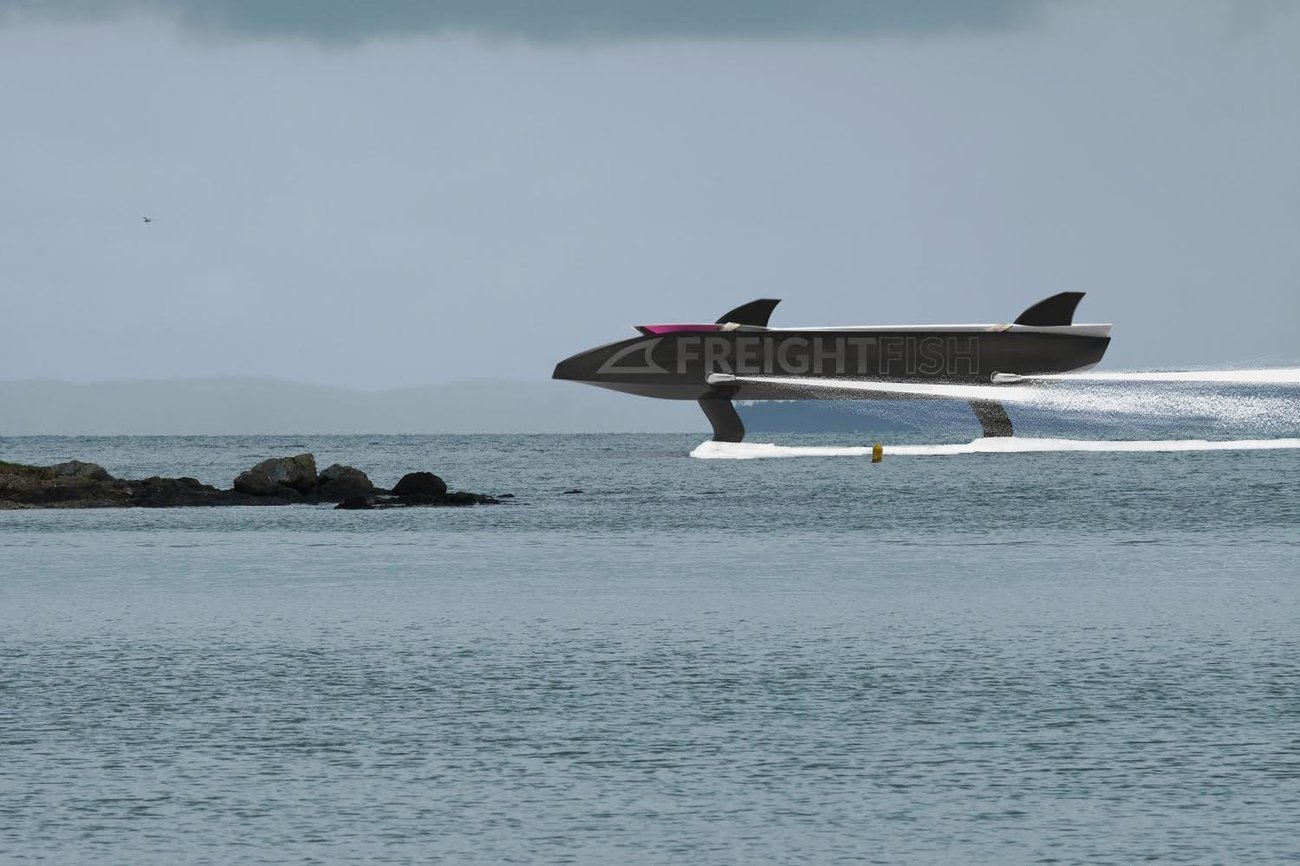
Max Olson, CEO of FreightFish, says there’s something rotten in the shipping industry.
“At the moment, on one end of the spectrum you’ve got sea freight which can take forever, and at the other air freight, which gets where it’s going overnight but costs several orders of magnitude more.”
There are reasons for that extra expense of course. To run an air freight business there are large upfront costs for aircraft, expenses arising from heavy regulation, plus steep fuel costs, as planes fly at high speeds to meet delivery targets.
“I thought there’s got to be some other way of shipping goods around,” says Olson. “And it was around the time of the America’s Cup – and there might be some influence there – but we sat down and did the maths and came out with the solution.”
The result of that brainstorming is FreightFish, a business looking to develop “hydro-foiling freight ships”. Along with co-founder Logan Anderson, Olson is looking to provide a fast but cost efficient alternative to air freight.
“We’re building hydrofoil freighters that carry two forty foot containers at a time,” he says. “Think small, fast ships travelling 100 kilometres an hour. We think we can offer a much cheaper service based on that alone, let alone all the regulations.”
Hydrofoils aren’t new technology – Italian inventor Enrico Forlanini began work on the technology in 1898 and Alexander Graham Bell set a world marine speed record of 114 km/h using the technology in 1919), but development dropped off in the 1980s as efficiencies reached their then current limit (if you’re looking for new leisure pursuits, there’s always the locally-designed Manta5 hydrofoil bike).
But that was then.
“We’ve seen a bit of a resurgence in the technology,” says Olson. “Now the tech is improving and the materials are improving – you can see their use in the America’s Cup. We think we can take that technology and apply it very well to the shipping industry.”
Olson left up-and-coming ag-tech company Halter in September last year. “The long and short of it was that Halter no longer really needed two mechanical engineers, so it no longer made sense for me to be running a software team. I didn’t have the full complement of skills to do that. I had this swinging around in my head and I hadn’t committed much time to it, but I knew I would attack it eventually.”
Attacking it he is, and he’ll have to: after all, the company plans to create a whole new system for shipping goods, and build the ships too.
“There’s the whole challenge of building a freight service – dealing with ports, and regulations, attracting and maintaining customers – and there’s a whole engineering challenge of building the ship as well.”
“We’re still a long way off having the ship ready to go,” he says. “Right now we’re in the small-scale prototype stage. The full-scale one’s going to take a bit longer – that’s probably a couple of years off – and will require a bit more money to build.”

L-R: FreightFish’s CEO Max Olson (left) and CTO Logan Anderson
Speaking of which, just what is it like raising capital for a project like this?
“It’s a project that excites people, but as a founder, you get a lot of people outright assuming your crazy. And it depends on whether people like the fact that you’re crazy or not,” he laughs.
“But the most important thing for us right now is hiring. We’re trying to hire a lead foils engineer at the moment – an intermediate engineer with experience on big navel projects – and a control systems engineer. Then building the prototype is the next thing on the list, then building and testing some small-scale foils.”




